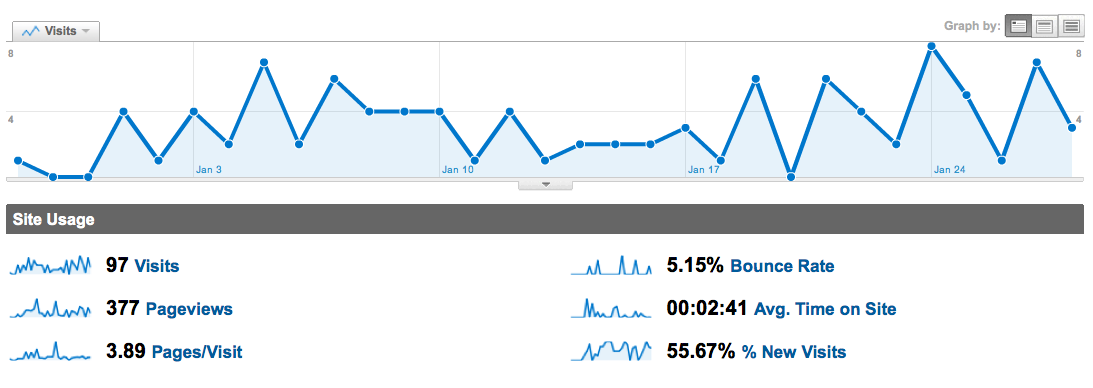
Web analytics is the measurement, collection, analysis and reporting of internet data in order to understand and optimize web usage. You use the data gleaned from an analysis to track all sorts of things, including who is visiting your site, what pages they are visiting, and how long they stay. Armed with such knowledge, you are then able to change your site content and structure to get more of the results you desire.
Conversions represent the number of visitors to your web site who completed a predefined goal or action.
The idea is pretty simple:
- Set trackable goals/conversions for your site
- Assign a value to each goal
- Use analytics to track the number of conversions and the associated source
- Compare the cost of each traffic source against the total conversions/benefit generated by that source
- Use ROI data to make adjustments to your site and online marketing strategy
On-site and Off-site Web Analytics
Off-site Analytics is measuring behavior on a segment of the web as a whole, whether you own the sites or not. It is done to monitor a website’s potential audience, visibility, and general web buzz. Basically, you gather data on who is searching for what and how he is doing it, then you compare that o how you are providing content to see if you can do it better.
On-site Analytics measures a user’s path through your website, and you as the owner of the site are able to see several key measurements:
- where you users are coming from
- where they go after coming to your site
- how long they stay
- how many times they visit your site
- what country your visitors are in
- what type of browser and computer they are using
These are just some of the metrics you are able to track.
Log File Based Analytics Vs. Tag-Based Analytics
There are a lot of great web analytics tools out there, some free, others proprietary. No two tools will bring back identical reports: they all use different data capture methods, different data processing algorithms, and different definitions. They will, however, report very similar trends. Trends are what you are on the lookout for with web analytics. The data just never will be exact, so you may as well accept that from the get go.
Log File-Based Tools
These types of tools are usually installed on your computer, part of a software suite. They collect data right at the moment the user sends the request for the page.
The pros:
- They show the actual load on your server, which would be very interesting to your tech team.
- They capture data very early in the process
The cons:
- They miss hits to cached pages
- They are limited to data captured in the Web server log file
- They capture a lot of useless data
- It is hard for them to filter out spiders/bots
Page Tag-Based (or Script-Based) Tools
With these, you are usually given some code that you embed on each page you want monitored. Then, the data is collected later, after the user has requested and loaded the page onto their machine.
The Pros:
- They are JavaScript-based and able to capture lots of supplemental data about the visitor and the content
- Most spiders/bots do not execute JavaScript, so they are automatically omitted from the data
- The JavaScript forces the page tag to fire even on cached pages
The Cons:
- They need the page tag to be on any page to be tracked
- They do not record a hit to the page until the page has been at least partly delivered to the client–if you have visitors that bounce away quickly, you may not see they were there at all.
- If the user has JavaScript disabled, then you have to put in this clunky workaround to capture the data and it’s pretty thin
Activity:
Using the free service Alexa, find and compare the off-site analytics for any two of the following sites:
What is the average time spent on the sites you chose?
What are the top search queries?
Do more men or women visit the sites?



